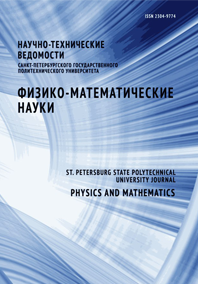Investigation of nanosized structures using internal friction effect
The goal of this work is to study electrically active defects in planar (Si-SiO2) and isoplanar (Si-SiO2-Si3N4) silicon electret structures by the internal friction Q–1 method. The Q–1 set with a reversed pendulum type design is used for research. The activation energies and frequency factors of thermoelastic processes were determined due to the displacement of peaks on the Q–1 relaxation spectra. Moreover, additional local maxima formed after electrification of structures were found on the temperature dependence Q–1. It is assumed that this may be due to the interaction of charged particles obtained as a result of irradiation in a corona discharge with capture centers, which are hydride Si-H and hydroxyl Si-OH groups, as well as with deep capture centers at the SiO2-Si3N4 interface. We confirmed that the developed complex research method for determining the main electrophysical parameters of electret structures based on silicon oxide and silicon nitride allows finding optimal approaches to electrifying Si-SiO2 and Si-SiO2-Si3N4 structures for their practical application as active elements of electret sensors and actuators.


